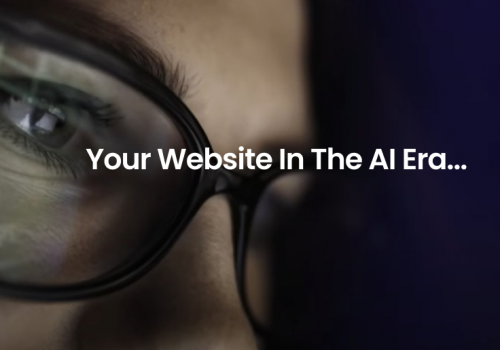Culture of Belonging. We all want our employees to feel happy when they come to work every day. We’ve covered several articles in the past on how happier employees are a great asset to your company. They work harder, they become invested in your success, and they stick around for longer. But what about belonging? Do your employees feel like they belong?
Belonging is at the top of this year’s Global Human Capital Trends survey, meaning it is one of the most critical human capital issues. The survey found that 79% of respondents said that a sense of belonging in the workplace was important to their organization’s success within the next year to 18 months. Furthermore, a whopping 93% of respondents agree that belonging drives operational performance.
What is Belonging?
Belonging is that sense you get that you are a valued member of a community. When people feel that they are part of a community, they feel a sense of purpose. A sense of belonging brings meaning into our lives, and this is true for all communities, whether it’s your sports teams, your church, your parenting group, or even your workplace.
Why is Belonging Important?
We’ll let the stats speak for us here:
A 2019 survey by BetterUp found that:
- Workplace belonging can lead to a staggering 56% increase in job performance.
- It can also lead to a 50% reduction in employee turnover risk.
- Workplace belonging can lead to a 75% decrease in employee sick days.
- A single incidence of micro-exclusion can lead to a 25% performance decline on a team project for the excluded individual.
Other studies have found similar things.
So, a sense of belonging can drive positive results for businesses, and lack of belonging can lead to more sick days and lower performance, but why are companies just starting to focus on belonging now in 2020 and 2021? The answer, like most things in business, is complex.
Researchers have known for quite a while that employee happiness and fulfillment are directly linked to organizational success. To try and create happier employees, businesses have focused on what benefits they can give employees. They’ve also focused on building company cultures that inspire motivation and happiness – cultures where every voice is heard, and ideas flow freely. Well, at least in principle. The problem with creating communities is that there’s a careful balance to maintain. What if you create communities that allow strong inner circles to develop? What if a large group of people feels strongly tied to their work community, but others feel entirely left out. Is your community really working for everyone?
Most people who work in offices can think back to a time where they felt excluded or have memories of cliques and divides. This can come in several forms. Sometimes contractors feel excluded from the workplace community despite sitting among employees every day and doing the same work. They feel a sense of “other.” Some companies will treat contracted team members very differently from how they treat employees. For example, employees may have much more flexibility in working from home than contractors, who often struggle to get permission even for a one-off like a childcare emergency or a broken-down vehicle.
Sometimes there’s a divide between teams. Why does the marketing team always get the budget they ask for, but we don’t? Sometimes there are tensions between people from different age groups or experiences. Creating a sense of belonging is vital for attracting the best talent, but it also keeps the company’s best talent.

Gen Z and Millennials
The CIGNA US Loneliness index is an online survey of over 20,000 US citizens that explores the loneliness of adults within the US. The results of this survey are alarming. Nearly half of Americans report sometimes or always feeling lonely (46%) or feeling left out (47%). Furthermore, one 5th of Americans say that they rarely or never feel close to other people or feel like nobody can talk to them about their problems.
Perhaps the most surprising finding is that Generation Z is the loneliest generation. The least lonely generation is those 72 years and older. If you’re not in Generation Z, and you’re reading this article, you’re probably thinking, “It’s social media, that’s why they’re so lonely.” But the evidence doesn’t support this claim. Respondents who were very heavy social media users only reported slightly lower loneliness scores than those who never used social media, suggesting that social media is barely a loneliness factor. Instead, levels of in-person interactions, mental and physical wellness, and work-life balance are much more significant predictors of loneliness.
Gen Z’ers, like everyone else, spend a significant amount of their time in the workplace, but they are more lonely. Why? It could be due to several factors:
- They feel excluded in workplaces and struggle to have meaningful in-person interactions.
- They feel less secure – Gen Z watched their parents lose their jobs during the 2008 recession, and they are entering the workforce at a time when life-time employment is rare.
- They don’t feel like trusted and valued members of the team.
Put simply, Gen Z’ers, and probably a good chunk of millennials, don’t feel like they belong, and our workplaces are suffering as a result.
Building a Community for Everyone, Not Just You
Another major reason some people feel excluded or lack a sense of belonging is when they think the community isn’t for them. This could be a significant reason behind Gen Z’s lack of belonging. Communities are built by the people in them, and sometimes this can lead to people feeling excluded, however unintentional it is. For example, US labor statistics data reports that around 6% of workers identify as LGBT. With 94% of people identifying as non-LGBT, the company may overlook the importance of celebrating LGBT events like Stonewall, etc. However, in a company of 500 employees, 6% is 30 people. That’s 30 people who may feel less engaged and feel like they don’t belong. That’s 30 people who might be less productive due to an easily fixed feeling of exclusion.
With all of this in mind, let’s take a look at six ways you can get started with creating a robust sense of belonging in your company.

Create a Culture of Belonging in 6 Steps
1. Allow Employees to Show Vulnerability
Vulnerability is linked to courage and growth. When people show vulnerability, they allow stronger bonds to be formed. They can also grow because they are willing to be open and honest about their mistakes rather than bury their head in the sand or pretend, they always do the right thing.
What does vulnerability in the workplace look like? You don’t have to create workshops where you force your employees to share their most personal secrets. But you should allow your employees to communicate openly and honestly when it’s appropriate, and don’t shame them for doing so. For example, if an employee comes to you with a difficult situation they are facing at home, you should treat them with respect and compassion and try to help within your ability. Don’t offer unsolicited advice, and don’t encourage them to “not think about it” or to “keep it at home.” Often, people become uncomfortable when others come to us with their problems, and our brains go into protection mode. Our minds start to look for ways for the situation to end, even if our advice isn’t the best for everyone. Allow people to name and claim their feelings if you want to create an environment of trust.
2. Feedback Loops
Workplaces that focus too much on negative feedback perform worse than those that balance negative feedback with positive feedback. Practicing gratitude has become a significant focus for mental health and well-being services over the last five years, despite the practice’s foundations dating back to Roman times. The idea is simple; we often catastrophize events in our life when we shouldn’t. Our brains are wired to be over tuned to the bad and ignore the good. By actively thinking of the things we’re grateful for, we help center our perspective and feel more confident in ourselves and our actions.
What does gratitude look like in the workplace? It means regularly telling employees when they do good work. It means giving shout outs to teams or individual employees. You can complement people on their work, but also activities outside their work. Do you have an employee who raised a lot of money for charity? Or one who recently did something great in the community? Show them that you value them as a person.
3. Track Happiness and Belonging
It’s great to have a goal to increase employee happiness and a sense of belonging, but you have to know how you will track and measure these goals. Belonging can seem like a vague concept on its own. Employee engagement surveys are a great way to track your ongoing success. It would be best if you tracked metrics across different demographics, like age, gender, race, LGBT, and even income. It’s only by doing this that you can see how happy your employees are as a collective. It will highlight whether certain groups feel excluded from the dominant culture.
4. Social Bonds
Social bonds are vital to fostering a sense of belonging. Research has shown that proximity to others helps strengthen social bonds, even for people who previously disliked each other. If you want to create stronger bonds in your company, then you might want to consider the following:
- How teams are structured – Do team members think there’s a rigid hierarchy where some people are less critical? Or do they seem all members of the group as equally crucial to the success of the team?
- How offices are designed – Does your office allow opportunities for social interactions?
- How are remote employees factored in? Can they be brought in to help form social bonds?
5. Intentional Inclusion
As we’ve already discussed, a lot of exclusion happens by accident. It’s not that people are actively trying to exclude others; it’s that they haven’t considered how to include actively. One way to combat this is to be very active about inclusion. In Culture Amp’s report on belonging, they offer an example. Imagine an office that has walls lined with photos of high-ranking employees. If all of these employees are white men, then women and people of color may see these photos every day and doubt their prospects. They will feel less motivated to excel if no one like them has made it into a position of power.
6. Sharing Stories
A sense of belonging is fostered through shared experiences and shared stories. Stories become the foundation of how we see our workplace, so it’s important to share stories from all employees. If you have a company newsletter, consider dedicating a page or two every edition to your employees’ experiences. Pick employees from different parts of the business – people in various roles and at different pay grades.




















